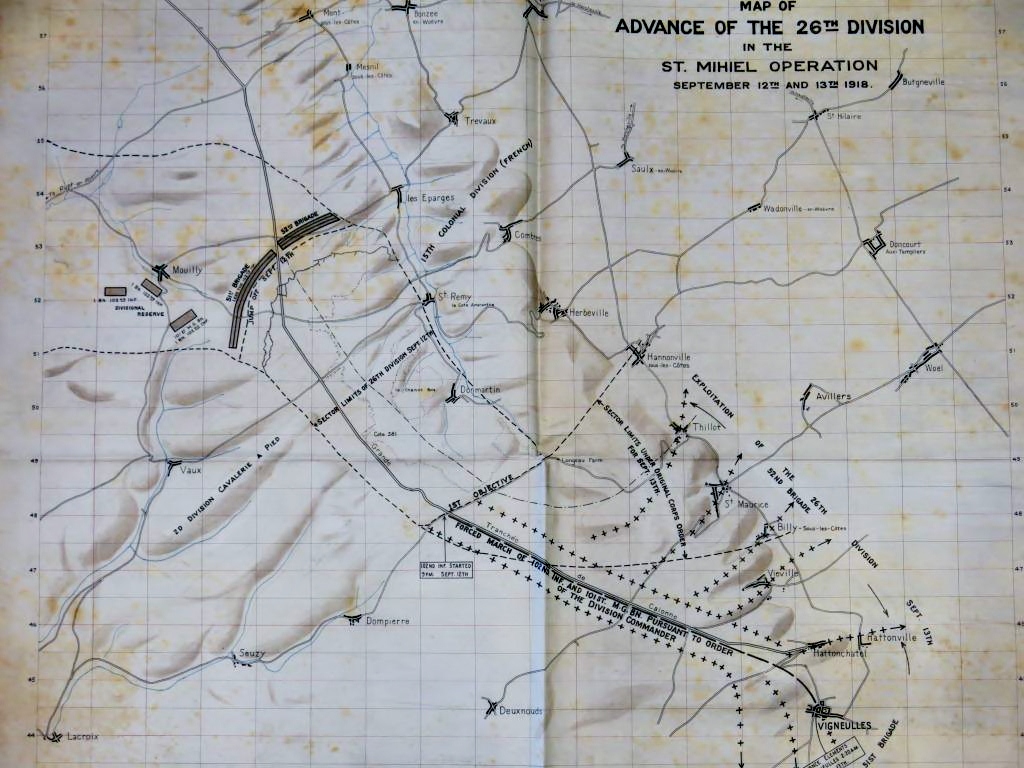By Dan Hinchen
In the autumn of 1918, the Great War in Europe was nearing its termination after four years of fighting. Beginning in August of that year, the Allies launched what became known as the Hundred Days Offensive, a series of attacks against the Central Powers which pushed the Western Front and the German lines out of France and, ultimately, resulted in an armistice. One such two-day offensive occurred near the French town of St. Mihiel on 12-13 September. The action was carried out by the 26th Infantry Division under the command of Maj. Gen. Clarence R. Edwards.

The 26th was formed by Edwards in the summer of 1917 and the first units of the Yankee Division sailed in September, “the first fully formed American division in France.” Over the next several months the division undertook training in France with their English and French counterparts so that they could acclimate to life in trenches and amidst hostile fire.
Fast forward to September 1918. Edwards and his division were in the area of St. Mihiel as a result of several months of fighting on the move in the northeast of France. Despite the rain and mud that slowed down some units from reaching their start line the night before the offensive, “the attack came off without any major hitch, following a tremendous artillery barrage during the early morning hours of September 12, 1918.”
Here at the Society are the Clarence Ransom Edwards papers, within which are several reports providing details about the operations performed by the 26th Division. One intelligence report, dated September 11 to September 12th, 1918, 16 o’clock to 16 o’clock, states that
The enemy, surprised by our attack, and with all communication to the rear out by our artillery fire, offered what resistance he could during the day, chiefly with his machine guns. In the open country the resistance was very weak. In the woods his machine gun nests proved fairly effective. The first day’s objective was reached before 22 o’clock.
These intelligence summaries, along with correspondence, memoranda, and other materials in the Edwards papers provide detailed insight into some of the operations of the “war to end all wars” and also highlight some of the personal drama between Edwards and his military colleagues. If you would like to learn more, visit the MHS library and see them for yourself!
-Shay, Michael E., Revered Commander, Maligned General: The Life of Clarence Ransom Edwards, 1859-1931. Columbia: University of Missouri Press, c.2011.

